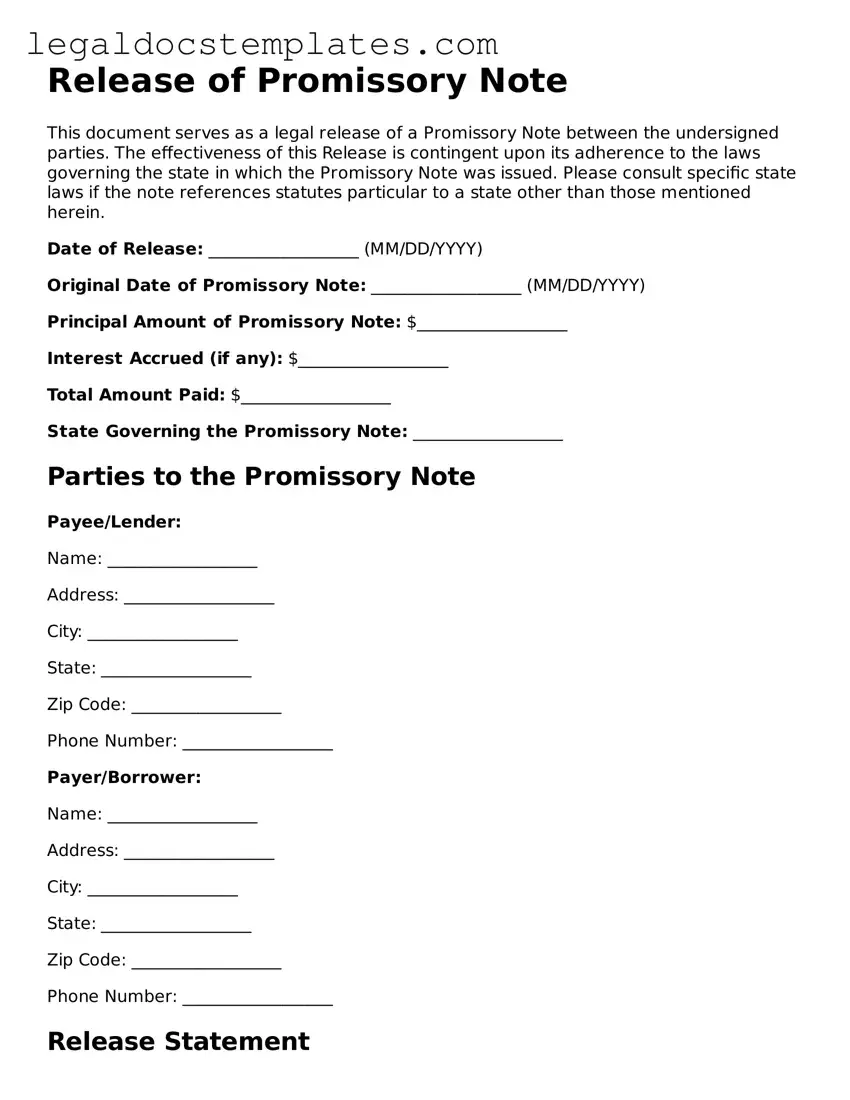Release of Promissory Note
This document serves as a legal release of a Promissory Note between the undersigned parties. The effectiveness of this Release is contingent upon its adherence to the laws governing the state in which the Promissory Note was issued. Please consult specific state laws if the note references statutes particular to a state other than those mentioned herein.
Date of Release: __________________ (MM/DD/YYYY)
Original Date of Promissory Note: __________________ (MM/DD/YYYY)
Principal Amount of Promissory Note: $__________________
Interest Accrued (if any): $__________________
Total Amount Paid: $__________________
State Governing the Promissory Note: __________________
Parties to the Promissory Note
Payee/Lender:
Name: __________________
Address: __________________
City: __________________
State: __________________
Zip Code: __________________
Phone Number: __________________
Payer/Borrower:
Name: __________________
Address: __________________
City: __________________
State: __________________
Zip Code: __________________
Phone Number: __________________
Release Statement
This document confirms that the Payer/Borrower named above has fulfilled their obligations under the Promissory Note dated as of the Original Date of Promissory Note. The Payee/Lender acknowledges receipt of the Total Amount Paid as full settlement of the note. Accordingly, the Payee/Lender releases the Payer/Borrower from any further obligations related to the Promissory Note.
Additional Agreements
_____ None
_____ The parties have agreed to the following additional terms:
- ________________________________________________________________
- ________________________________________________________________
- ________________________________________________________________
In witness whereof, the parties have executed this Release on the Date of Release first above written.
Payee/Lender Signature: _________________________
Date: __________________ (MM/DD/YYYY)
Payer/Borrower Signature: _________________________
Date: __________________ (MM/DD/YYYY)
